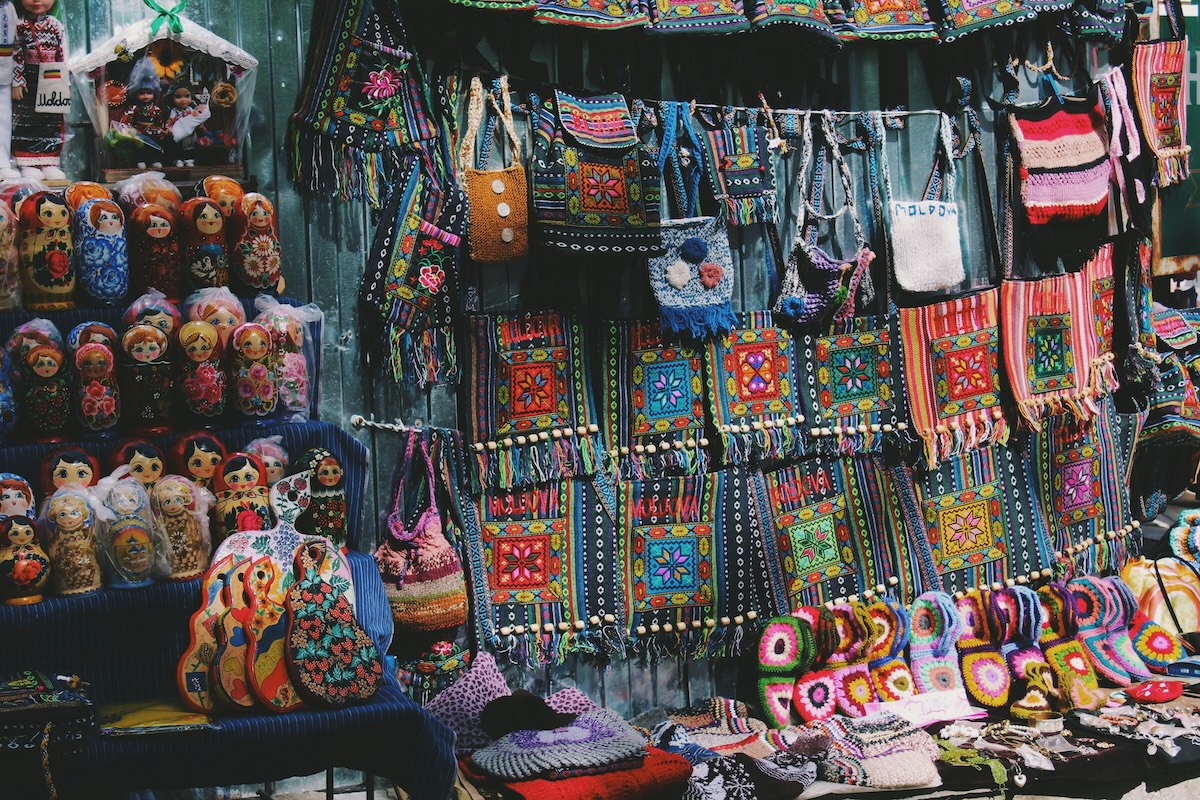
How to Haggle in Foreign Countries: Overcoming the Fear of Negotiating in Marketplaces
By: Sarah Stone
Skip to Section
Article Summary
Haggling might feel awkward at first, but in many parts of the world, it’s expected—and knowing how to do it respectfully can help you get better deals and connect more with local culture.
This guide walks you through the basics of where, when, and how to haggle, along with simple strategies to boost your confidence and make the process smoother. You’ll also learn how to read the room, avoid common mistakes, and make bargaining a fun, respectful part of your travel experience.
- Haggling is common in markets and street stalls throughout Asia, the Middle East, Latin America, and beyond.
- Start by observing locals and asking questions—then try small negotiations to build confidence.
- Stay polite and calm, offer a fair counter, and don’t be afraid to walk away if the price isn’t right.
- Bundle purchases, learn local phrases, and use humor to keep the tone friendly and productive.
- The more you practice, the better you’ll get—and the more you’ll enjoy the process.
Haggling can be an awkward, uncomfortable experience if you’re not used to it—and if you’ve found yourself at a market abroad, you might find yourself expected to engage in a negotiation over an item you’re interested in.
It’s a super prevalent practice in many parts of the world, particularly in markets, street stalls, and even some retail stores. Understanding the nuances of haggling can enhance your travel experience, allowing you to engage more deeply with the local community.
Let’s look at how to get over that fear and haggle like a pro!
Understanding Haggling in Different Cultures
In cultures where haggling is an integral part of the market experience, not engaging in the practice can sometimes be seen as unusual or even disrespectful. It can imply that the buyer is indifferent to the value of the goods or the effort of the seller. However, the expectation to haggle can also depend on the context and the type of products being sold. Typically, fixed-price goods in department stores or supermarkets are not subject to haggling, whereas open markets and street vendors expect it.
For travelers, understanding the local haggling culture and engaging in it respectfully can lead to more meaningful interactions and a deeper understanding of the local way of life. It’s important to remember that while haggling is about reaching an agreeable price, it’s also about mutual respect, communication, and cultural exchange.
Here are a few examples of places where you may be expected to haggle while traveling:
Middle East and North Africa: In nations such as Morocco, Egypt, and Turkey, haggling is deeply embedded in the market culture. Prices often start high, with the expectation that the buyer will counteroffer. Here, haggling is more than just a way to determine the price; it’s a form of social interaction and a way to establish a relationship between the buyer and seller.
South Asia: In countries like India, Pakistan, and Bangladesh, bargaining is common in markets, street stalls, and even with some drivers. Haggling is part of the shopping experience, and not engaging in bargaining might result in paying more than the local market rate and can sometimes be seen as a sign of disinterest or disrespect to the seller’s initial offer.
Southeast Asia: In destinations like Thailand, Vietnam, and Indonesia, tourists find that haggling is part of the local shopping culture, especially in markets and street stalls. The practice allows both parties to feel satisfied with the final transaction. It’s essential to approach the process with respect and a smile, as aggressive haggling can be seen as rude.
Latin America: In many Latin American markets, haggling is common, though the intensity of bargaining can vary widely from country to country and even region to region. Markets are places where social interactions are valued, and haggling is a part of these interactions. Understanding the local language and showing respect can go a long way in these negotiations.
Make sure to do your research before traveling—the amount of haggling you’ll engage in, and even the attitude taken with the seller can vary widely between different countries and even within regions of the same country.
Overcoming Your Fear of Haggling in a Foreign Country

Photo by Alina Grubnyak on Unsplash
Even though you might understand the reasoning behind haggling in your chosen destination, you may still feel strange engaging in it yourself. You don’t have to start out with an aggressive negotiation over an expensive, rare item—here are some ways to help overcome a fear of haggling while you’re traveling.
Start Small
Once you’ve arrived at your destination, consulting locals or tour guides can help you with insights into local negotiation practices. They can advise on when and where it’s appropriate, as well as standard negotiation tactics and price ranges.
Spend some time discreetly watching locals and other shoppers haggle—this can give you an idea of price ranges, negotiation styles, and how sellers are likely to react. Pay close attention to non-verbal cues too, as they can be just as important as what’s being said out loud.
Set a budget, and pay attention to the price ranges of items you’re interested in. If, for example, you’re looking for a pair of earrings, stop by different stalls to look at the prices and pay attention to conversations others are having around you.
Once you have an idea of your maximum spend and some basic guidelines, start the conversation! Be friendly and respectful—don’t feel the need to start right in on the negotiation, but rather ask questions about the item itself, like what it’s made of, or where it comes from.
Develop Your Confidence
Now that you have a little conversation going, make an offer based on the seller’s asking price; make your counter offer lower than what you’re willing to pay, but still reasonable. A good rule of thumb is to start at 30% to 50% off of the asking price, though you’ll want to do some research into your destination—you don’t want to accidentally come off as disrespectful.
Stay calm and relaxed, and don’t show disappointment or frustration if the price is higher than you expect. Silence can actually do a lot of work for you here: stay quiet and wait for their response. If you keep talking, they have no reason to close the sale (and you definitely don’t want to talk yourself out of a negotiation!).
If the seller isn’t willing to meet a price close to what you’re offering, politely decline, or make another counter offer. Be prepared to walk away—sometimes if you thank them and leave, they’ll be inclined to lower the price a bit more. The goal here is to demonstrate that you want the item, but you’re not desperate for it. You’re here to reach an agreement that both you and the seller are satisfied with, and not to simply reduce the price as much as possible. Respect for the seller’s livelihood and the value of the item should always be in consideration.
And of course if you’re interested in a few different items at that stall, consider asking the seller if they’ll give a discount on a bundle—this can be a great way to dip your toe into haggling without feeling as though you’re being rude by asking for a discount on a single item.
Moving onto More Aggressive Haggling
Now let’s say you’re looking for more than a single item—maybe you’re spending a fair amount of time in a country where haggling is a prevalent practice, or maybe you’re on the hunt for multiple gifts and souvenirs. Developing the confidence and tactics to negotiate over and over will help you save money, learn more about the culture, and engage with fascinating people!
In addition to starting small, consider role-playing with a travel buddy. Practicing in a low-pressure setting can help you build that confidence and familiarize yourself with the negotiation process, which you can use to center yourself and reduce anxiety in the actual situation.
Learn key phrases in the local language specific to haggling, such as “this is too expensive,” or “what’s the best price?” Of course, stay polite and friendly, and always be respectful to the seller. A positive attitude and interaction will make the bargaining process less stressful and lead to a better outcome for both of you. Try to add some humor to help break the ice and build rapport with the seller.
Understanding the actual value of the items you’re interested in can help strengthen your position too—knowing local prices and cost structure can boost your confidence in suggesting fair prices and recognizing reasonable offers.
And finally: practice, practice, practice! The more you do it, and the more you reflect on each experience, considering what went well and what can be improved, will help calm your nerves, make you better at haggling, and help you save more in bigger-ticket items.
Ready to Go?
If you’re totally new to haggling, it can feel overwhelming, or even like you’re trying to rip off a local seller—but if it’s part of the culture, it’s not rude to engage! Remember to do your research into pricing, negotiation tactics, and even a few key phrases in the local language, and you’ll be on your way to haggling like a pro.
And for our readers who’ve overcome their fear of negotiation in foreign marketplaces, be sure to share your tips and stories with the Frayed Passport community!
About the Author
 As the editor-in-chief of Frayed Passport, my goal is to help you build a lifestyle that lets you travel the world whenever you want and however long you want, and not worry about where your next paycheck will come from. I've been to 20+ countries and five continents, lived for years as a full-time digital nomad, and have worked completely remotely since 2015. If you would like to share your story with our community, or partner with Frayed Passport, get in touch with me using the form on our About page.
As the editor-in-chief of Frayed Passport, my goal is to help you build a lifestyle that lets you travel the world whenever you want and however long you want, and not worry about where your next paycheck will come from. I've been to 20+ countries and five continents, lived for years as a full-time digital nomad, and have worked completely remotely since 2015. If you would like to share your story with our community, or partner with Frayed Passport, get in touch with me using the form on our About page.Featured image by Eddi Aguirre on Unsplash
Information published on this website and across our networks can change over time. Stories and recommendations reflect the subjective opinions of our writers. You should consult multiple sources to ensure you have the most current, safe, and correct details for your own research and plans.
Frayed Passport is a participant in the Amazon Associates Program, an affiliate advertising program designed to provide a means for sites to earn advertising fees by advertising and linking to Amazon.com. We also may share links to other affiliates and sponsors in articles across our website.





